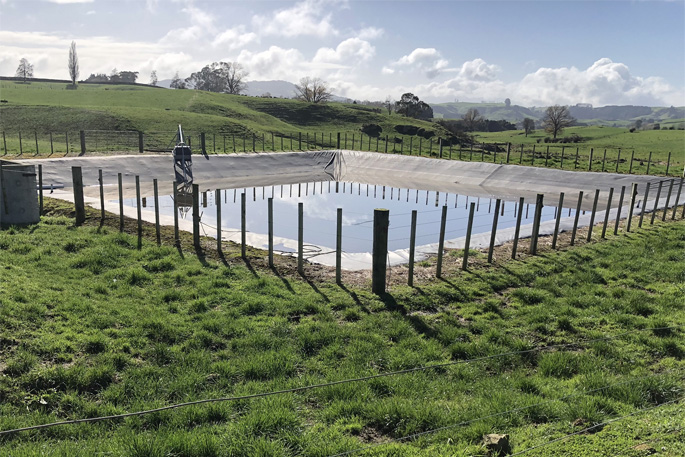Waikato Regional Council monitoring of high risk farms has revealed the dire state of dairy effluent infrastructure, with some farms having just one-thousandth of the storage needed.
WRC investigations manager Patrick Lynch says the council initiated a strategic, risk-based approach to farm monitoring in early-2018, which involved prioritising those farms with less than seven days’ effluent storage, or likely to irrigate onto saturated soils or with a history of non-compliance.
“What we’ve found is of real concern. Unfortunately, the state of dairy effluent infrastructure on many farms is probably worse than we had expected, with some farms only having one-thousandth of the storage they need.”
Patrick says the council adopted the risk-based approach so it could direct resources where they were most needed.
“There are a large number of Waikato dairy farmers who are doing the right thing and have invested in improving their infrastructure. So instead of blanket monitoring all farms, we have focused on monitoring high risk farms – the results of that monitoring show there’s still a lot of work to be done.”
WRC farming services team leader Stuart Stone says at December his team had completed 239 inspections of high risk farms since July 2018.
“Thirty-one per cent – or just over 70 – of these farms are what we would term ‘significantly non-compliant’. Many of these are now being formally investigated with a strong possibility that some will result in prosecution.”
Stuart says there were some really good examples of best practice infrastructure on farms in the region.
“Good systems have the dual benefit of preventing effluent polluting the environment, while also providing an excellent source of fertiliser for the farmer. It is great to see those in place.
“However, we are also seeing a high number farms that have inadequate infrastructure with barely any capacity to prevent effluent going into the environment, and ultimately impacting on water quality.
“Some systems are only providing a couple of thousand litres of storage, at best, and servicing large herds. These are the systems that we would say are only one-thousandth of what they should be,” says Stuart.
“This means wet weather, or other pressures on the farm, can lead to these farms unlawfully discharging effluent into the environment.”
Patrick says during the last five years the council had taken about four or five prosecutions relating to dairy effluent each year. “Already this year we have commenced nine prosecutions and are formally investigating a further 16.
“We feel that all stakeholders in the dairy industry still have a very long way to go in pulling the poor performers up to the required standard. We will continue to monitor high risk farms and continue to make our findings known to the community.”



0 Comments
Leave a Comment